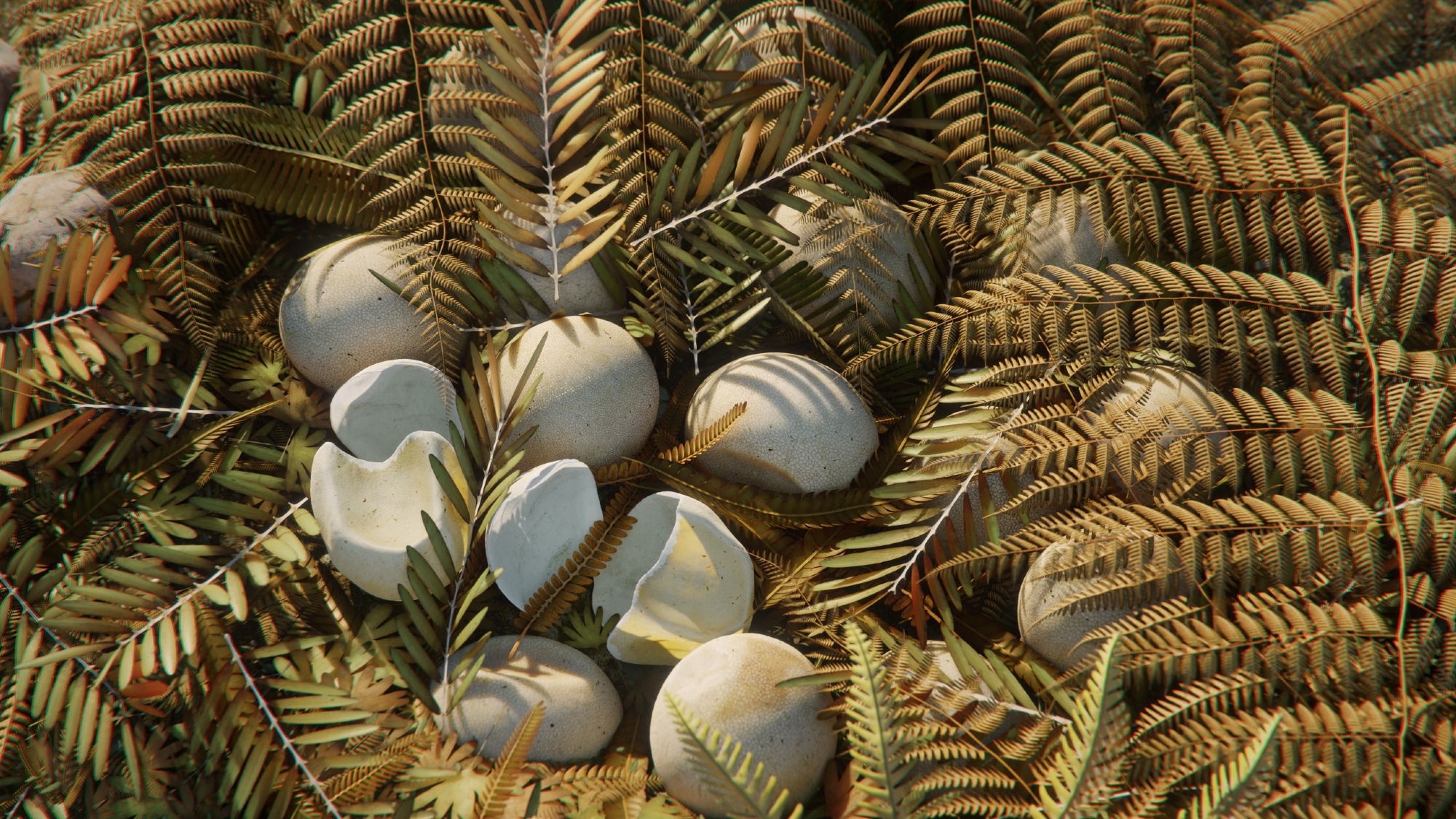The last three decades have witnessed the discovery of several remarkably well-preserved dinosaur specimens related to reproduction, significantly advancing the understanding of dinosaur reproductive biology.
 Reconstruction of egg nests containing fossilized embryos. Image Credit: NICE Vistudio.
Reconstruction of egg nests containing fossilized embryos. Image Credit: NICE Vistudio.
However, despite these findings, the realm of dinosaur reproduction remained enigmatic due to limited fossil evidence and a lack of extensive quantitative analysis across different evolutionary branches, particularly in pre-Cretaceous times.
In a recent breakthrough, researchers from the Institute of Vertebrate Paleontology and Paleoanthropology (IVPP) of the Chinese Academy of Sciences (CAS) uncovered a fossil in Guizhou, China, shedding light on the early stages of dinosaur reproduction.
The findings suggest that the initial dinosaur eggs were leathery, with a crucial shift in egg morphology occurring early in the evolution of theropod dinosaurs rather than at the onset of bird evolution.
The study was published in the journal National Science Review on October 5th, 2023.
The discovery revolves around specimens of a new early Jurassic sauropodomorph dinosaur species named Qianlong shouhu, found in Guizhou, China. Comprising three skeletons from adult individuals and five egg clutches, this finding potentially represents the earliest fossil evidence of the connection between adult dinosaurs and nests.
The name “Qianlong” translates to “Guizhou dragon,” while “shouhu” refers to “guarding,” emphasizing the preservation of adult skeletal fossils alongside eggs containing embryos.
Qianlong, a medium-sized basal sauropodomorph dinosaur weighing one ton and measuring about 6 m in length, exhibited differences between adult and embryonic specimens, such as a proportionally longer skull and a more vertical anterior snout margin.
Allometric analyses of limb ratios indicated that adult Qianlong could walk on its hindlimbs, while the juveniles were likely quadrupedal.
The researchers also delved into the eggshell microstructure of Qianlong, utilizing various techniques such as histological thin-sectioning and scanning electron microscopy.
The results revealed that Qianlong’s eggs had a leathery texture, with a calcareous layer thicker than soft-shelled eggs but thinner than hard-shelled eggs. The eggshell surface featured small fragments, distinguishing it from other eggshell types.
To understand macroevolutionary patterns across the dinosaur–bird transition, the researchers analyzed data from 210 fossil and extant species across major reptilian clades.
They observed a decrease in relative egg size from the Diapsida base to the Saurischia base but an increase from early theropods to the crown bird node. Eggshell thickness followed a similar trend, decreasing from the archosaur base to the Saurischia base before significantly increasing early in theropod and sauropodomorph evolution.
Despite variations in egg shape throughout diapsid evolution, the study indicated a return to ancestral states, with only slightly elongated eggs inherited by all crown bird clades.
Overall, the reconstructed ancestral state of various eggshell types supports the notion that the first dinosaur egg was likely leathery, relatively small, and elliptical. Moreover, a leathery eggshell probably represented the ancestral state of Avemetatarsalia, Archosauria, and Testudines.
Source:
Journal reference:
Han, F., et al. (2023) Exceptional Early Jurassic fossils with leathery eggs shed light on dinosaur reproductive biology. National Science Review. doi.org/10.1093/nsr/nwad258.